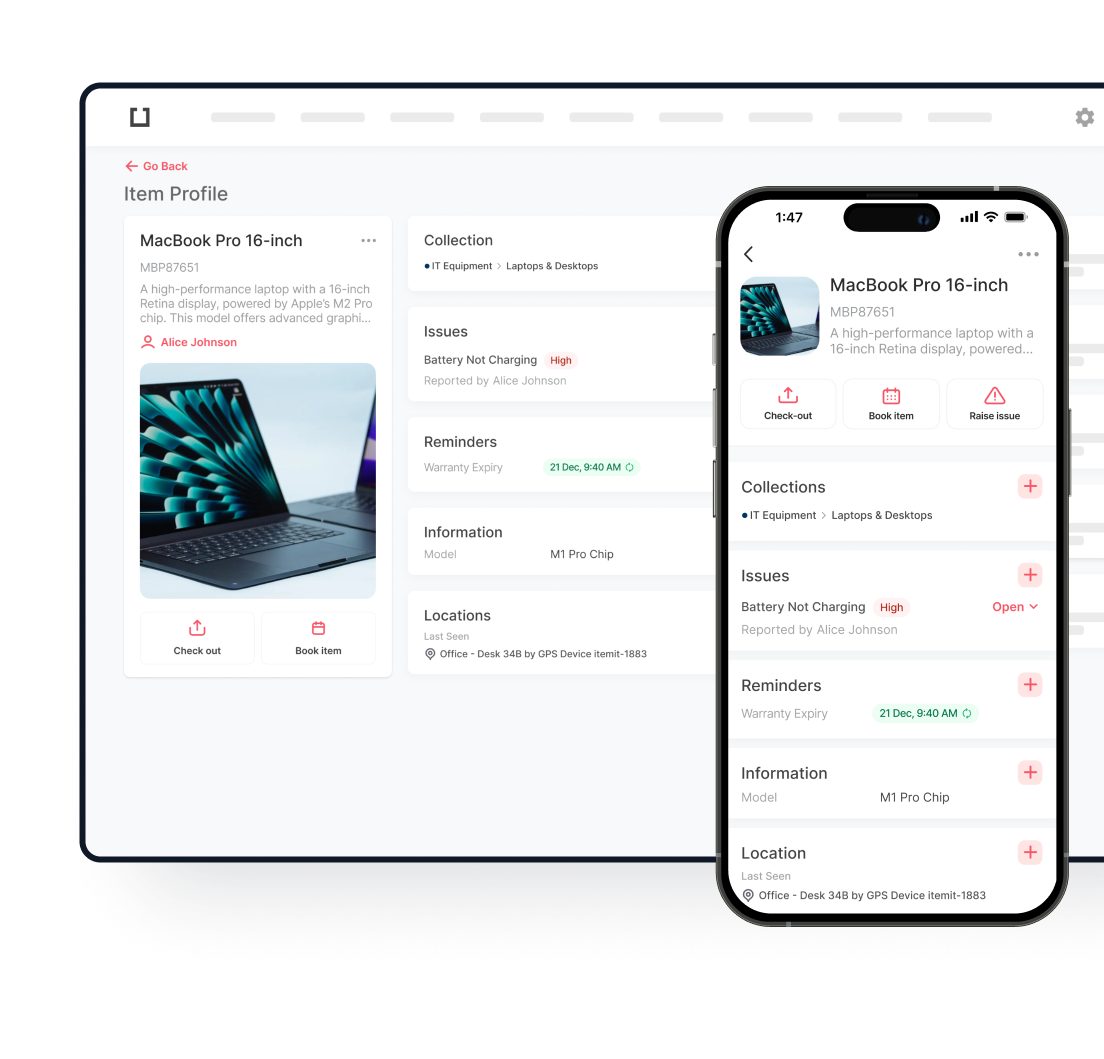
Why is inventory management paramount in ensuring smooth operations, avoiding stock-outs or overstocking, and maintaining accurate financial records for small businesses? Proper control of your inventory will help you become more efficient, save money, and create satisfied customers. We’ll cover a number of ways of inventory management, the merits of using a barcode system, organising your inventory, and cycle counting in this article. Let’s dive into these topics, so that you can keep track of inventory effectively for your small business.
The Methods of Inventory Management
Correct inventory management is the backbone of any successful small business. The method applied may differ, though, in relation to needs and the scale of your business. In this section, we will consider a few of the more common inventory management methods and how each can contribute to your small business.
Just-In-Time (JIT)
Just-In-Time inventory management is a method in which inventory ordering and receipt occur just in time – for use during the production process. This approach allows for the lowest possible inventory holding costs and reduces potential waste. Think of this in the context of a café: ordering fresh ingredients just in time, so that none goes to waste and not holding more stock than you need.
Benefits of JIT: It offers cost efficiency and minimises large storage spaces; hence, cutting down on the holding costs involved. Secondly, it reduces wastage by minimising the risk of obsolete inventory and improves cash flow by freeing up capital that is to be used in other business operations.
First-In, First-Out (FIFO)
Under the FIFO method, the sale of inventory is made in the order of its purchase. This method is especially useful for businesses that handle perishable goods and items with a definite useful life. Consider the grocery store, where the oldest produce will always be at the front so that it sells before it spoils.
Advantages of FIFO: In the case of perishable items, FIFO prevents them from becoming obsolete or reaching their expiry date by selling the older stock before the fresh arrivals. It actually represents the flow, provides correct costing and financial reporting, and assists in tracking inventory for a proper inventory system.
Last-In, First-Out (LIFO)
The Last-In, First-Out (LIFO) concept is exactly the reverse of FIFO. According to LIFO, we first sell off the latest inventory acquired. This concept might find application in situations such as inflation. Consider a hardware shop that always sells the newest batch of tools it has to keep up with changing prices.
Benefits of LIFO: LIFO can provide tax advantages during an inflation period. It matches the most recent higher costs against current revenues. LIFO decreases holding inventory of the most recent, higher-cost items and facilitates the keeping of inventory accounted for properly.
ABC Analysis
The ABC Analysis system segregates inventory into three classes: A, B, and C. ‘A’ stands for most valuable items, ‘B’ is moderately valuable, and ‘C’ reflects the least valuable. It assists companies in concentrating on the items with the greatest value. For instance, a boutique clothing store may want to put more time into managing high-value designer items but still monitor the mid-range and low-cost items.
Benefits of ABC Analysis: The ABC analysis will aid in focusing on the most crucial items in the inventory. It assists in inventory cost control through effective management across different categories, increasing the monitoring ability of the assets by ranking the inventory according to its value.
Economic Order Quantity (EOQ)
The EOQ model is designed to provide the optimal order quantity that will minimise total inventory costs in this case, ordering and holding costs. Think of this method as trying to find the perfect quantity of boxes, say of office supplies, that you can order without running out too often or storing too much.
Advantages of EOQ: EOQ is the quantity that has to be purchased at one time so that the total cost will be minimum. It rationalises the ordering process for determining the most economical order size and aids in maintaining optimum inventory.
Perpetual Inventory System
The perpetual inventory system allows updating of inventory records after every transaction. It is thus readily applicable to current data on the levels of inventory. For instance, a retail store is installed with a point of sales system. These automatically update the inventory records as and when sales are executed.
Benefits of Perpetual Inventory System: Real-time tracking gives updated information on the inventory levels any time, thus enhancing the ability to make better decisions. This therefore prevents stockouts, which could be caused by inaccurate inventory data management, hence improving the efficiency of the overall inventory.
It is a tool that brings enormous benefits in efficiency, saving costs, and improved operations if the right inventory management method is implemented. Assess the needs of your business and determine the method that best aligns with your objectives.
Barcode System for Small Business

It has become an extremely efficient tool for small businesses in inventory tracking and accuracy. It makes use of barcodes and barcode scanners in the management of inventory data. Now, let’s dive into details of the benefits of the barcode system on how to make barcodes for your small business and recommend the best barcode inventory systems.
What is a Barcode System?
A barcode system assigns unique codes or barcodes to every product so that by scanning, information about the product is either retrieved or updated. Inventory management is thus fully automated and free from manual errors. For instance, a bookstore can scan books at the time of sale or while restocking; this will update the inventory position instantly.
Benefits of a Barcode System for Small Businesses
Barcodes are known for their precision. They prevent mistakes in entering data manually, securing precise monitoring of inventory. For example, a small electronics shop can utilise barcodes to accurately monitor the movement of each product, decreasing the likelihood of errors.
Efficiency is improved by rapidly scanning barcodes to update inventory records, expediting the inventory management process. This is particularly advantageous in busy times, such as holiday sales, where prompt and precise inventory control is essential.
Cost Reduction is achieved by cutting labour expenses linked to manual handling of inventory and decreasing mistakes that may result in financial setbacks. Small businesses can cut costs by requiring less staff for inventory duties and minimising losses from inventory errors.
Barcodes enhanced monitoring offering instant information on inventory levels, aiding businesses in more efficient inventory tracking. Instant tracking enables a clothing store to promptly identify when a best-selling product is running out of stock and requires replenishment.
Improved customer satisfaction is achieved by ensuring products are in stock and readily available through enhanced customer service. For example, a pharmacy that utilizes barcodes can guarantee that important medications are consistently available, increasing customer confidence and contentment.
How to Make Barcodes for Small Business
Generating barcodes for your small business is a simple procedure. The steps are as follows:
- Selecting a Barcode Generator: There are different options for online barcode generators like Online Barcode Generator, Barcode TEC-IT, and Free Barcode Generator by Shopify. These user-friendly tools provide customization options to suit your individual requirements.
- Entering Product Details: Input required product information like product name, price, and SKU (Stock Keeping Unit). This could mean inputting information for every kind of bread, pastry, or cake in a bakery.
- Producing the Barcode: A distinct barcode will be generated by the barcode generator for every product. This task can be completed rapidly and effortlessly on the internet, typically at no cost or for a low fee.
- Printing: You can use either a barcode printer or a regular printer with adhesive labels. Top-notch barcode printers guarantee that the barcodes remain scannable and long-lasting, even when items are regularly handled.
- Utilising Barcodes: Affix the printed barcodes to the matching products. Make sure to position them in easily readable locations, like on the packaging of products or on tags.
Best Barcode Inventory Systems for Small Businesses

Here are some of the best barcode inventory systems that can benefit small businesses:
itemit asset tracking for small business is a comprehensive barcode inventory system designed to help companies of all sizes manage their assets efficiently. We offer a range of features that make it particularly useful for small businesses looking to improve their inventory management processes.
Zoho Inventory is an all-in-one inventory management system that has barcode scanning, order management, and real-time tracking. Zoho Inventory integrates seamlessly with all of the top shopping sites, making it ideal for online sellers seeking to simplify their inventory management.
Fishbowl is known for its robust features, including barcode scanning, inventory tracking, and integration with the most popular accounting software available, which is QuickBooks. Fishbowl is very suitable for manufacturing and warehouse management because it allows for advanced tracking and management activities.
EZOfficeInventory provides small business asset tracking, barcode scanning, and detailed reporting features that make it best suited for it. EZOfficeInventory provides maintenance scheduling in combination with its asset lifecycle management; these are benefits to companies with big physical assets.
inFlow Inventory delivers barcode scanning, inventory tracking, and order management capability. It is easy to use and permits multiple locations to be managed—ideal for businesses who have several stores or warehouses.
Implementing a barcode system is sure to revolutionise the manner of doing inventory for your small business. This will bring about more accuracy, productivity, and lower costs.
How to Organise Inventory
Efficiently managing inventory is essential for smooth operations and convenient access to products. Below are some techniques for arranging inventory, as well as the advantages and resources for monitoring assets.
Advantages of Organising Inventory
An efficiently organised inventory system simplifies operations, facilitating the locating and handling of products. Picture a hardware shop where each tool is placed in its assigned spot, enabling staff to locate items efficiently and assist customers promptly.
Effective organisation decreases the likelihood of errors in inventory management, like misplacement or inaccurate counts. A poorly organised warehouse could result in wrong deliveries, while a properly organised one guarantees precise order completion.
Improved storage efficiency results in better space utilisation, enabling a higher number of products to be stored within the same area. A small retail store can utilise vertical shelves to maximise product storage without crowding the floor area.
A well-structured inventory system simplifies monitoring and asset tracking and guarantees precise inventory documentation. This is especially crucial for companies with valuable assets, such as electronic retail stores or healthcare supply companies.
Strategies of Organising Inventory

Utilising successful tactics can greatly enhance the organisation of your inventory.
Classify Items: Arrange products into different categories depending on factors like kind, dimensions, or purpose. This simplifies the process of finding items efficiently and organising inventory in a structured manner. For example, a grocery store could categorise items by aisles based on various types of food.
Label Everything: Track all goods with clear and consistent labelling on all products and storage areas. This aids in quick recognition and access to goods, decreasing the time needed to find items. For instance, a clothing store has the option to designate shelves and racks based on size, colour, and style.
Set up a Barcode System: As previously stated, implementing a barcode system can greatly improve inventory management by automating the tracking system. This helps to minimise mistakes from manual data entry and guarantees up-to-date information, enabling companies to stay on top of accurate inventory tracking.
Utilise Inventory Management Software: Make an investment in inventory management software that provides functions such as asset tracking, real-time monitoring, and reporting. This software has the ability to offer important information on inventory levels and trends, which can help improve decision-making. Applications such as QuickBooks, TradeGecko, and Ordoro have the ability to simplify inventory operations and connect with various other business platforms.
Frequently Check Inventory: Regularly review inventory to confirm correct placement and to address any discrepancies in records. This aids in keeping inventory levels precise and promptly detecting any issues. Regular audits on a monthly or quarterly basis can identify and resolve minor issues before they escalate into significant challenges.
Arrange Your Warehouse: Organise your storage space in a manner that aligns with your business needs to maximise efficiency. Arrange popular items in convenient spots and structure products sensibly to reduce search time. A warehouse could utilise pallet racking systems to arrange heavier items on the lower levels and lighter, more commonly used items on the upper levels.
Tools for Asset Monitoring
Here are the tracking tools that might just optimise your asset organisation:
- Barcode Scanners: These asset tracking tools are very essential in making sure that the inventory system works effectively and accurately. This way, the barcode scanner can easily scan for product information that is sent to inventory records directly to update – that is, with minimal fingerwork.
- Inventory Management Software: Provides a complete suite of tools needed to organise, track, and manage inventory. Tracking tools like Itemit’s asset tracking software can automate some or all of the processes related to maintaining inventory, providing insights into inventory levels and trends for businesses.
- Mobile Applications: Most inventory management systems are bundled with a free mobile application that allows you to check your inventory even while on the move. These applications make things flexible and more comfortable, and updating inventory records from anywhere is possible. This may benefit an organisation that has remote or mobile employees.
Proper organisation of your inventory will enhance efficiency and effective asset tracking, allowing proper space utilisation.
Cycle Counting Inventory
Cycle counting is an inventory auditing methodology where a partial count of the inventory is conducted on a regular basis rather than performing a physical complete count. This section will define cycle counting, outline its advantages, and describe the process of performing a cycle count with the reasons why small businesses must have periodic inventory cycle counts.
What is Cycle Counting?
Cycle counting refers to the regular counting of a small portion of inventory, such as daily, weekly, or monthly, to verify that the inventory records are accurate. It is different from a physical count, where the whole inventory is counted at one time because it spreads the counting over time. For instance, a small electronics retailer would count some shelves of products every week instead of closing down to count all at once.
Advantages of Cycle Counting Over Traditional Physical Counts
Cycle counting provides multiple benefits compared to traditional manual counts.
- Reduced Interruption: Cycle counting can be smoothly implemented into daily routines, as opposed to full physical counts, which usually result in operational shutdowns. This enables companies to keep running smoothly without compromising on the accuracy of their inventory.
- Ongoing Precision: Consistent inventory checks help maintain accurate inventory records, decreasing the chance of errors. This contributes to ensuring accurate inventory information for decision-making and financial reporting.
- Time-Saving: Cycle counting saves time compared to complete physical counts, allowing resources to be allocated to other business activities. By extending the counting process over a longer period, businesses can better allocate their resources.
- Cost Savings: Cycle counting decreases the labour and operational expenses linked to conducting complete physical inventories. It requires fewer resources and can be carried out by current employees, cutting down on the need for extra labour.
Process of Conducting a Cycle Count
To carry out a cycle count, it is necessary to follow various important steps for accuracy and efficiency. Below is a detailed set of instructions:
Develop a Schedule: Decide on the frequency of cycle counts and the specific items to be counted during each session. Items that are expensive or frequently sold may be tallied more often than others. Develop a timetable that coincides with the functioning of your business and guarantees regular inventory counts.
Select Items: Pick specific inventory items for each cycle count according to your timetable. You can accomplish this by either selecting randomly or employing an ABC analysis method. Make sure to regularly count a representative sample of inventory items to ensure overall accuracy.
Staff Training: Make sure all employees participating in inventory checks are appropriately trained on the procedure, including the utilisation of any necessary equipment and technology. Training should address the significance of cycle counting, the necessary procedures, and the proper handling of discrepancies.
Perform the Inventory Check: Physically check the chosen items in stock and verify against the recorded quantities in your inventory system. Utilise barcode scanners or other tracking tools to ensure accuracy and efficiency during the count.
Overseeing and Management: Investigate and resolve any differences between the quantity recorded and the actual count. This could include verifying data input accuracy, theft, or lost items. Dealing with discrepancies in a timely manner ensures that inventory records remain accurate.
Update Inventory Records: Make sure your inventory records are updated to show the correct counts from the cycle count. Record all modifications and promptly update documentation.
Review and Evaluate: Consistently assess cycle count findings to detect trends or repeated problems and implement measures to enhance overall inventory precision. Examine the data to pinpoint patterns, such as regular inconsistencies in specific product categories or regions.
Comparing Cycle Counting with Physical Counts
While both cycle counting and traditional physical counts aim to ensure accurate inventory records, there are notable differences:
Cycle Counting:
- Conducted regularly on a small subset of inventory.
- Minimises operational disruption.
- Provides continuous updates to inventory records.
- Less labour-intensive and time-consuming.
Physical Counts:
- Involves counting the entire inventory at once.
- Often requires shutting down operations.
- Provides a snapshot of inventory at a specific point in time.
- It can be labour-intensive and time-consuming.
Importance of Regular Inventory Cycle Counts for Small Businesses
Small businesses rely on regular inventory cycle counts for many essential reasons.
Improved Inventory Precision: Consistent cycle counts aid in upholding precise inventory documentation, minimising the chance of shortages or excess stock levels. Precise inventory information guarantees that items are on hand when necessary and decreases the chances of having too much inventory blocking funds.
Enhanced Financial Reporting: Precise inventory data supports reliable financial reporting, enabling businesses to make well-informed choices. Accurate inventory records are crucial for financial statements, tax reporting, and audits.
Well-Established Processes: Efficient operations are maintained by consistently monitoring inventory through cycle counts, which promptly detects and resolves discrepancies. Businesses can enhance order fulfilment and optimise their supply chain through the continuous upkeep of precise inventory records.
Improved Customer Service: Precise inventory logs guarantee that items are in stock when customers require them, enhancing customer contentment. With dependable inventory data, businesses can offer precise delivery estimates and prevent backorders.
Cut Costs: Precise inventory records help businesses avoid unnecessary purchases and lower holding expenses. This information also aids in effectively managing procurement and decreases surplus inventory and related expenses.
Introducing routine inventory cycle counts can greatly improve the precision and effectiveness of inventory management for small companies.
The Final Word: Mastering Inventory Management for Success
Efficient inventory management is crucial for the prosperity of every small business. Small businesses can gain improved control over their inventory by learning and applying various inventory management techniques, adopting barcode technology, organising inventory effectively, and performing frequent cycle counts. These methods enhance operational efficiency, leading to cost savings, precise financial reporting, and increased customer satisfaction. Begin implementing these tactics now to manage your inventory better and guarantee the efficient running of your small business.

Try itemit
Choose a better way to track
your assets.
Start your free 14-day trial now!
FAQ: How to Keep Track of Inventory for Small Business
What is the best method of inventory management for a small business?
The best method depends on your specific needs and operations. Common methods include Just-In-Time (JIT), First-In, First-Out (FIFO), Last-In, First-Out (LIFO), ABC Analysis, Economic Order Quantity (EOQ), and Perpetual Inventory System. Each method has its own benefits, so consider factors like product type, turnover rate, and storage capacity when choosing.
How can a barcode system benefit my small business?
A barcode system improves accuracy by eliminating manual data entry errors, increases efficiency by speeding up the inventory management process, and provides real-time tracking of inventory levels. It also helps reduce labour costs and enhances customer service by ensuring products are in stock and available.
How do I create barcodes for my products?
Creating barcodes involves choosing a barcode generator, inputting product information, generating the barcode, printing the barcodes, and applying them to the corresponding products. There are many online tools available that make this process straightforward.
What are some recommended barcode inventory systems for small businesses?
Some of the best barcode inventory systems for small businesses include Zoho Inventory, Fishbowl, EZOfficeInventory, and inFlow Inventory. These systems offer comprehensive features like barcode scanning, order management, real-time tracking, and integration with other business software.
How should I organise my inventory?
Effective inventory organisation involves categorising products, labelling everything clearly, implementing a barcode system, using inventory management software, conducting regular inventory reviews, and optimising your storage layout. These strategies help improve efficiency, reduce errors, and ensure better space utilisation.
What is cycle counting, and why is it important?
Cycle counting is a method of inventory auditing where a portion of the inventory is counted regularly, rather than conducting a full physical count. It helps maintain continuous accuracy in inventory records, reduces operational disruption, saves time and costs, and ensures reliable data for decision-making and financial reporting.
How often should I conduct cycle counts?
The frequency of cycle counts depends on your inventory volume and turnover rate. High-value or high-turnover items should be counted more frequently, such as daily or weekly, while other items can be counted monthly or quarterly. Establish a schedule that aligns with your business operations.
What tools are essential for effective inventory management?
Key tools for inventory management include barcode scanners, inventory management software, label printers, and mobile apps. These tools help streamline inventory processes, improve accuracy, and provide real-time data for better decision-making.
How can I reduce inventory management costs?
Reducing inventory management costs can be achieved by implementing efficient inventory management methods (e.g., JIT, FIFO), using a barcode system to minimise errors and labour costs, organising inventory effectively, conducting regular cycle counts, and using inventory management software to optimise processes.
Why is accurate inventory management crucial for small businesses?
Accurate inventory management is vital for avoiding stock outs or overstocking, maintaining accurate financial records, improving operational efficiency, enhancing customer satisfaction, and reducing costs. It ensures that products are available when needed and helps businesses make informed decisions based on reliable data.

Keep Learning
itemit Blog
Tips, guides, industry best practices, and news.
The Ultimate Guide to RFID Inventory Management
Discover the beginner’s guide to RFID inventory management technology. Learn how to improve accuracy, streamline stock tracking, and boost efficiency today!
A Guide to the Different Types of Inventory Management
Discover the different types of inventory management systems and how each can improve efficiency and accuracy in managing your business inventory.
Understanding the Inventory Tracking Process and Its Importance
Learn about the inventory tracking process and its importance. Discover how it helps improve efficiency, accuracy, and overall business management.


